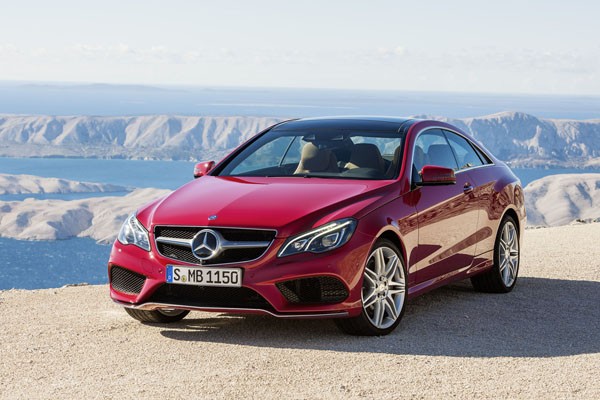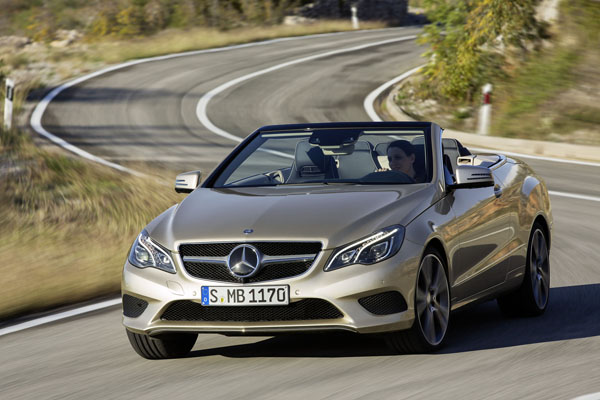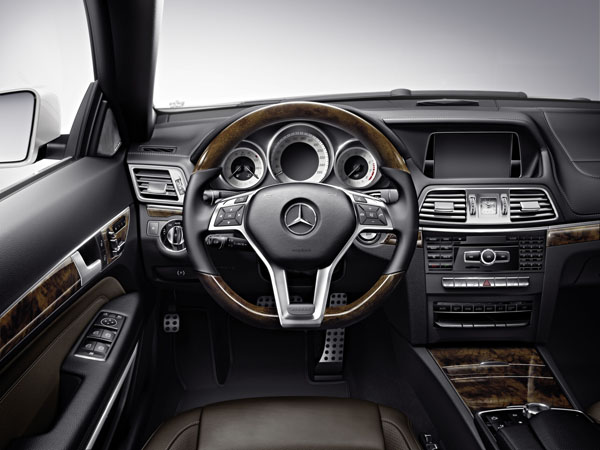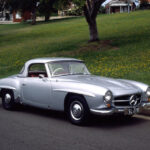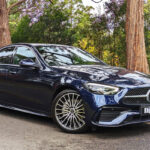Mercedes has carried out an extensive redesign of its mid-sized E-Class coupe and cabriolet and at the same time has introduced an impressive all-new turbocharged V6 engine.
Though the overall shape of the about to be superseded E-Class was very good, the frontal appearance was regarded as being overly complex by many critics. The new look is significantly neater and more attractive. We spent some time chatting to the chief designer, Robert Lesnik, during the global media launch in Germany and Denmark, where he explained how he had done this work without interfering with the impressively low coefficient of drag; just 0.24.
Sporty looks are a feature of the latest Mercedes models, no more so than in the new E-Class coupe and cabriolet thanks to their large three-dimension grille centred around the iconic three-pointed star. So great is the alteration to the appearance that it’s hard to believe the bonnet and front guards remain as before. By doing so body change costs having been minimised, thus leaving more in the budget to be spent in other areas.
Inside, the latest E-Class retains the same overall design theme as the original, but detail changes to the colours and finish of the materials work well and increase the feeling of luxurious sportiness.
Biggest news in the E-Class is the introduction of a new V6 engine in the model called the E 400. In keeping with Mercedes’ downsizing policy – to reduce emissions and trim fuel consumption – the company’s new 400 series engine displaces just 3.0 litres, but achieves V8-like performance thanks to the use to twin turbochargers.
With up to 245 kW of power, with an amazing 480 Nm of torque through most of its rev range – that peak being maintained all the way from 1400 to 4000 rpm – the Mercedes E 400 engine can move the big coupe from zero to 100 km/h in only 5.2 seconds, yet the fuel consumption is officially measured at just 7.4 litres per hundred kilometres.
So impressed is Mercedes-Benz Australia with this new E 400 that it plans to concentrate on it in place of the V8 unit currently used as the topline powerplant. Though some buyers may feel they need they image of a V8, a test drive of this high-tech V6 is likely to convince them otherwise. That, and the savings of around $50,000 when they opt for the high-performance biturbo six.
Most of our driving time in the revised E-Class sporty models was done behind the wheel of the all-new biturbo V6 and we loved the effortless surge of torque as we took it over the high side of 200 km/h on several occasions on the famed unrestricted sections of an autobahn.
More realistically for Australia, the biturbo engine provides the safety of effortless overtaking on tight country roads.
Also on offer in Australia will be four-cylinder turbo petrol engines in the E 200 and E 250. For the first time, Mercedes-Benz Australia offers an E-Class coupe for under $80,000 (plus on-road costs). The most expensive model in the range is the E 400 cabriolet with a recommended retail of $142,900. The E 250 carries a tag of $96,400 as a coupe, and $106,400 in open-top format.
All E-Class models set up for Australia are very well equipped and we feel most buyers will find the car suits their tastes without any real need to tick many, if any, options boxes.
We tested the E 250 after our enjoyable 300+ km behind the biturbo V6 engine and feel that many buyers will be happy with the output of this smaller capacity unit. We are yet to get behind the wheel of an E 200.
Safety is of increasing importance to Australian drivers and these mid-sized Mercedes have many crash avoidance features designed for the much more expensive S-Class. Thus we see monitoring of all potential dangers for 360 degrees around the car; lane keeping; radar cruise control; automatic braking and pedestrian collision protection.
If you should still be caught up in a serious collision the E-Class will do its very best to minimise injuries.
Ride comfort proved excellent on the European roads, which are generally in better condition than those in Australia. Tyre noise doesn’t intrude to any real extent, even in the cabriolet when the roof is closed. Should you open the roof – and we must admit that with the temperature generally round the 12 to 14 degree mark we didn’t do a lot of topless motoring – you can still enjoy some comfort thanks to the heated seats and optionally-fitted Airscarf. The latter blows heated air onto your shoulders.
Handling is good due to the low centre of gravity and the balance offered by the front-engine rear-drive layout and by the dynamic precision built into these sporting machines.
Cabin room is better than anticipated and we managed a couple of hundred kilometres in a cabriolet with a fair sized bloke in the rear. We moved the front passenger seat forward to share legroom and all three occupants enjoyed decent space.
As family cars with mum, dad and a pair of pre-teen children the Mercedes-Benz E-Class coupe and cabriolet work surprisingly well.
Though the sporting variants of the E-Class won’t be introduced to Australia until late in the year the sedan and wagon are scheduled to reach us midway through June. We will attend that event and bring you driving details on these important new Mercedes on Australian roads.




